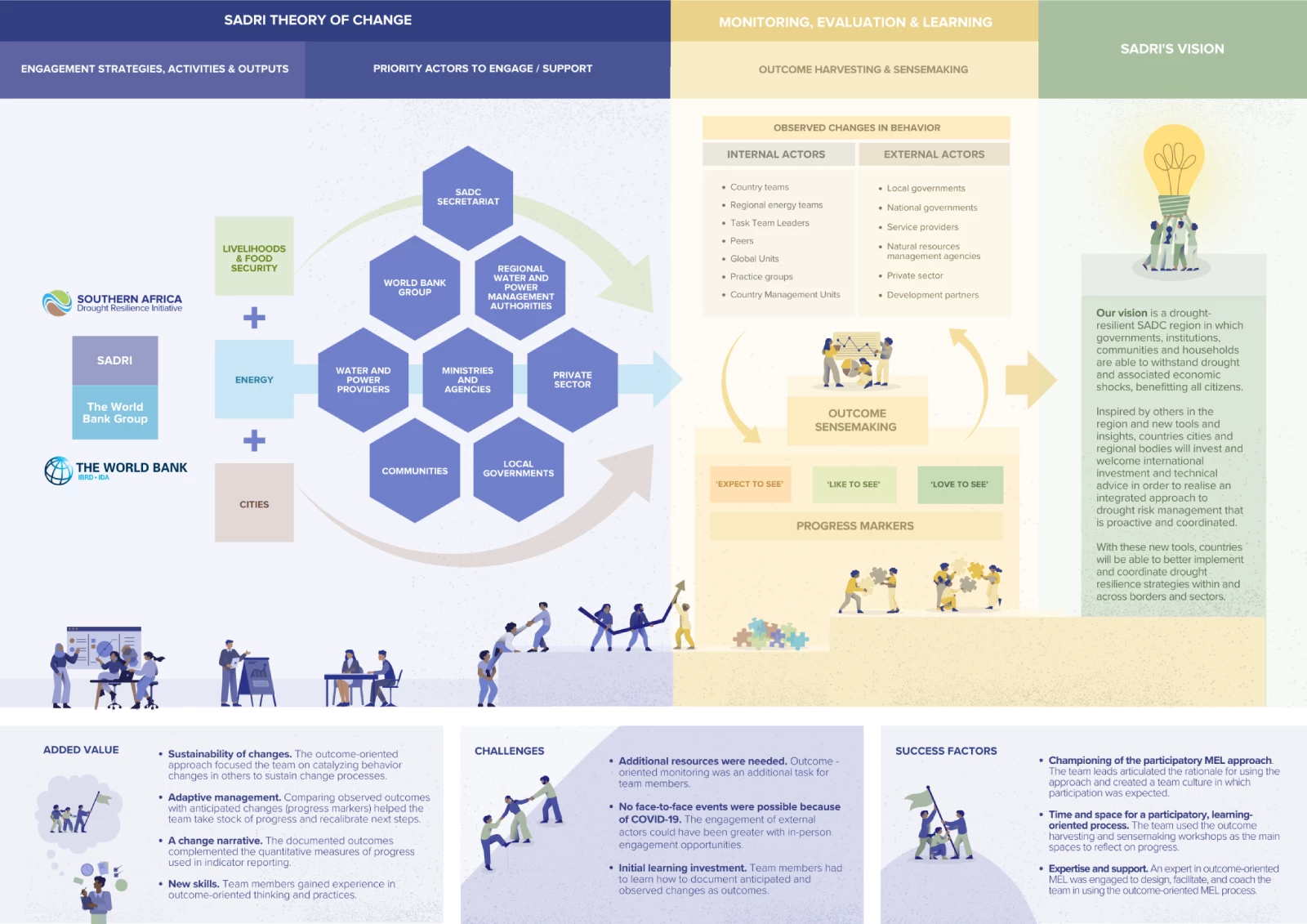 Southern Africa Drought Resilience Initiative (SADRI)
Southern Africa Drought Resilience Initiative (SADRI)
Just over two years ago, I shared my initial thoughts regarding the World Bank’s Southern Africa Drought Resilience Initiative (SADRI) technical assistance program, which was launched in 2020, with support from the Cooperation in International Waters in Africa (CIWA). In that post, I mentioned the significant, but often hidden, impacts that droughts have on economies throughout the region and the challenges and opportunities for building drought resilience. Water is fundamental to life, economic growth, and a livable planet, but far too many people are suffering from droughts and floods, often exacerbated by climate change.
At that time, the SADRI team was beginning to implement the activities across the program’s thematic pillars: (i) Cities, (ii) Energy Systems, and (iii) Livelihoods & Food Security. These pillars were stitched together through an overarching “umbrella pillar,” which regularly brought the thematic Leads from different Global Practices together to think through strategic decisions, discuss areas for integrating activities across sectors, learn from one another, and collectively reflect on the program’s robust monitoring, evaluation, and learning (MEL) framework.
Droughts are the most deadly and costly natural disaster for most of the 16 Member States of the Southern Africa Development Community (SADC). Since 2018, the region has experienced protracted droughts that have inflicted tremendous hardship, from cities running out of water, to declining hydropower production and collapsing rural livelihoods and food insecurity.
The drought challenge, therefore, requires an integrated, cross-sectoral response.
SADRI’s vision was of a drought-resilient region in which governments, institutions, and households develop proactive mechanisms to withstand climate change impacts and associated economic shocks.
The three key elements of SADRI’s integrated drought risk management framework included:
- Drought monitoring and early-warning systems
- Drought vulnerability and risk assessment
- Drought preparedness, mitigation, and response
SADRI produced numerous technical and analytical products (available in the Learn More section below ) that laid the foundation for building drought resilience across scales and sectors in Southern Africa and an overall synthesis report.
I highlight the organizational structure of SADRI because it was the bedrock for the program to stake a credible claim on the generation and dissemination of drought resilience knowledge. We ask our clients to work across ministries and jurisdictions to shift the paradigm toward more proactive management of droughts and climate change; we must do the same within our own walls.
SADRI structure/Theory of change:
This is not an easy endeavor. It takes stamina and commitment. There were setbacks along the way with navigating internal silos and structures, turnover in team leads rotating to different assignments, and struggles to convince clients and partners that integrating against drought is worth the time and effort. In the end, the SADRI program prevailed and made an impact on partners and clients throughout the region; the outcomes and outputs are proof of its success.
SADRI’s cross-sectoral approach to drought analytical work provides a new model for engagement in Southern Africa and regions beyond. It is informing the next generation of climate change-related operational lending, such as the recently approved Regional Climate Resilience Program Series of Projects for Eastern and Southern Africa.
As SADRI officially wraps up, the team is organizing dissemination events, working with project teams to integrate analytics and SADRI-inspired client dialogue into the design of other operations and investments, and taking advantage of every opportunity to share the lessons of the program. The journey of SADRI does not stop with the closing of the project. In fact, this is just the beginning.
Related Links:
City Drought Risk Management Toolkit
Regional Guidance Note for urban water systems
Review of Strategic Food Reserves Policies for Improving Resilience to Drought – SADRI
The SADRI Experience with Outcome-oriented Monitoring, Evaluation and Learning (MEL)
Outcome-Oriented Monitoring, Evaluation, and Learning – Final Report – SADRI
Toward a Drought-Resilient Southern Africa – SADRI Synthesis Report




Join the Conversation